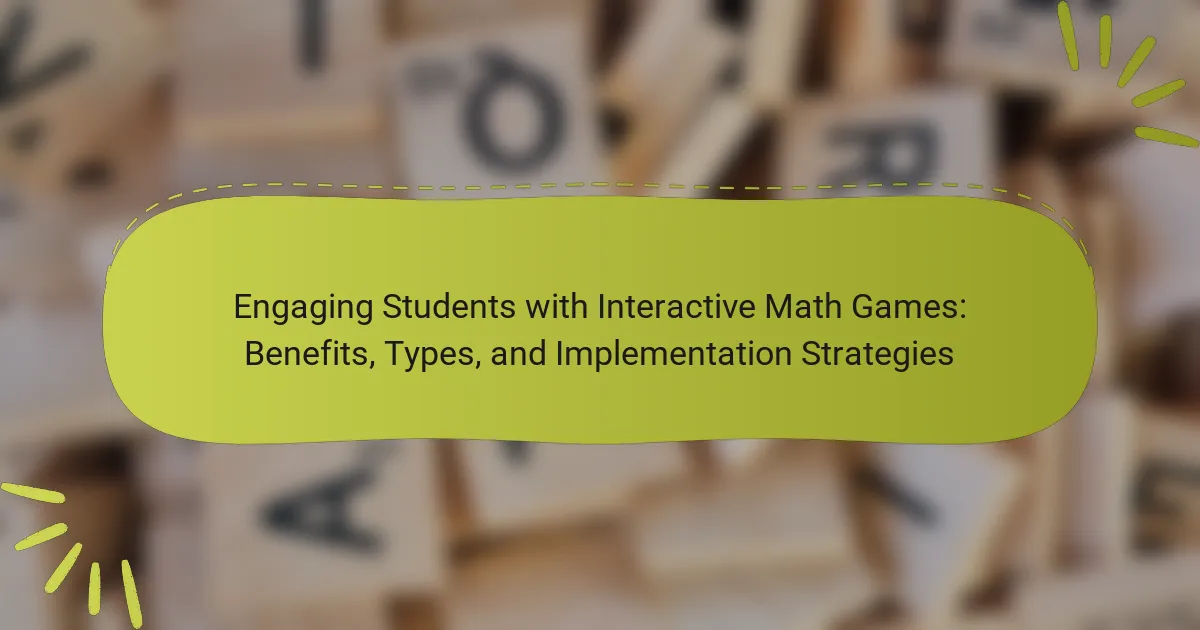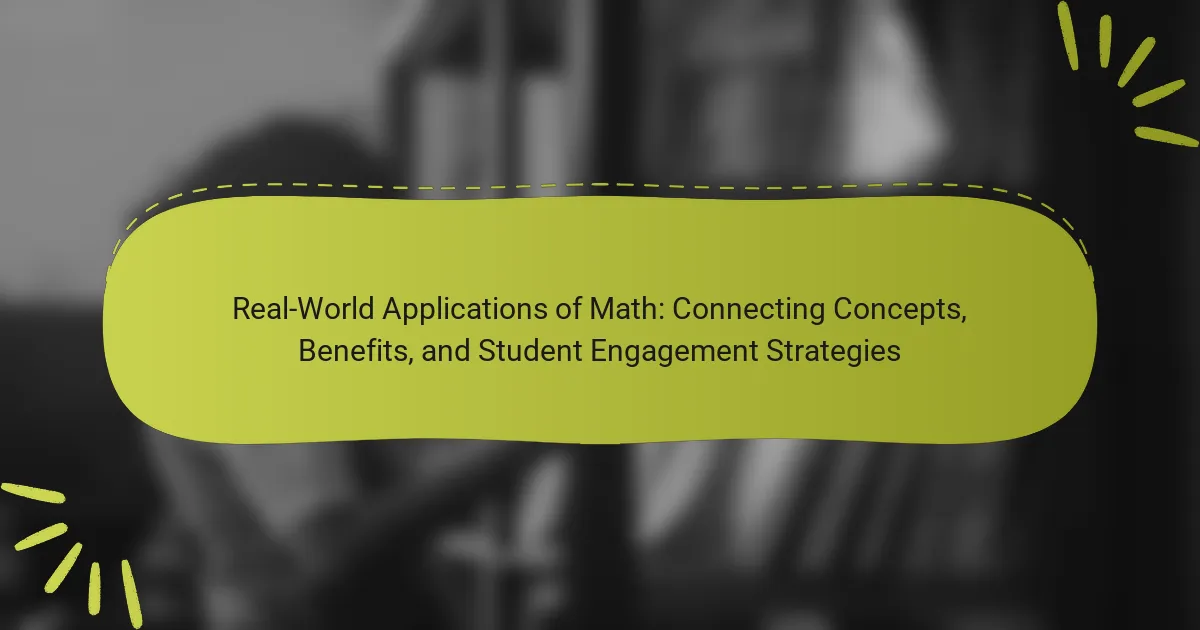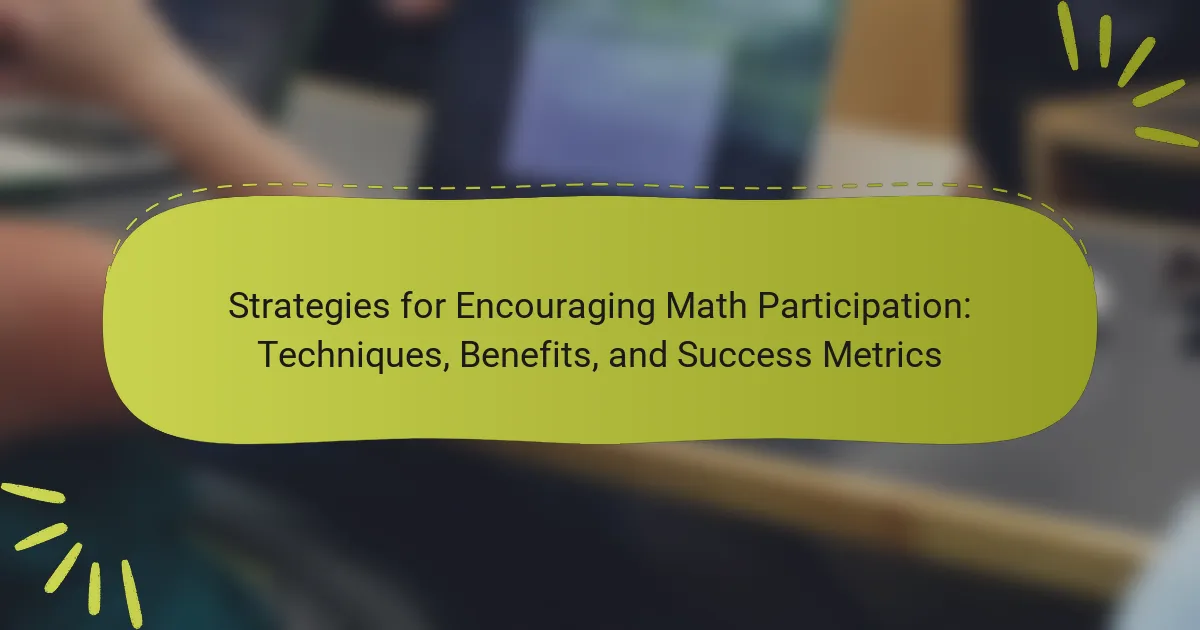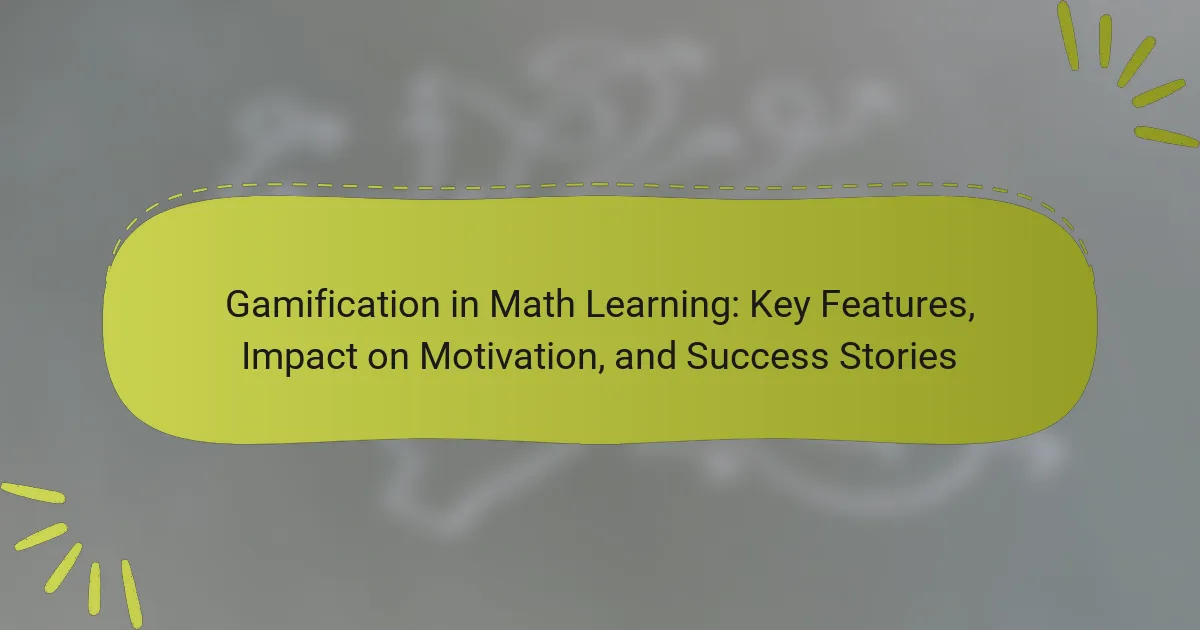Differentiated instruction in math is an educational approach designed to accommodate the diverse needs of students by tailoring teaching methods. It involves adjusting content, processes, and products based on individual student readiness levels, backgrounds, and learning preferences. Key strategies for implementing differentiated instruction include flexible grouping, tiered assignments, and ongoing assessment, which foster collaboration and challenge all learners appropriately. Tools such as adaptive learning software, manipulatives, and varied assessment methods further support this approach, enhancing engagement and understanding among diverse learners in mathematics. Research indicates that differentiated instruction can lead to improved student engagement and academic performance compared to traditional teaching methods.
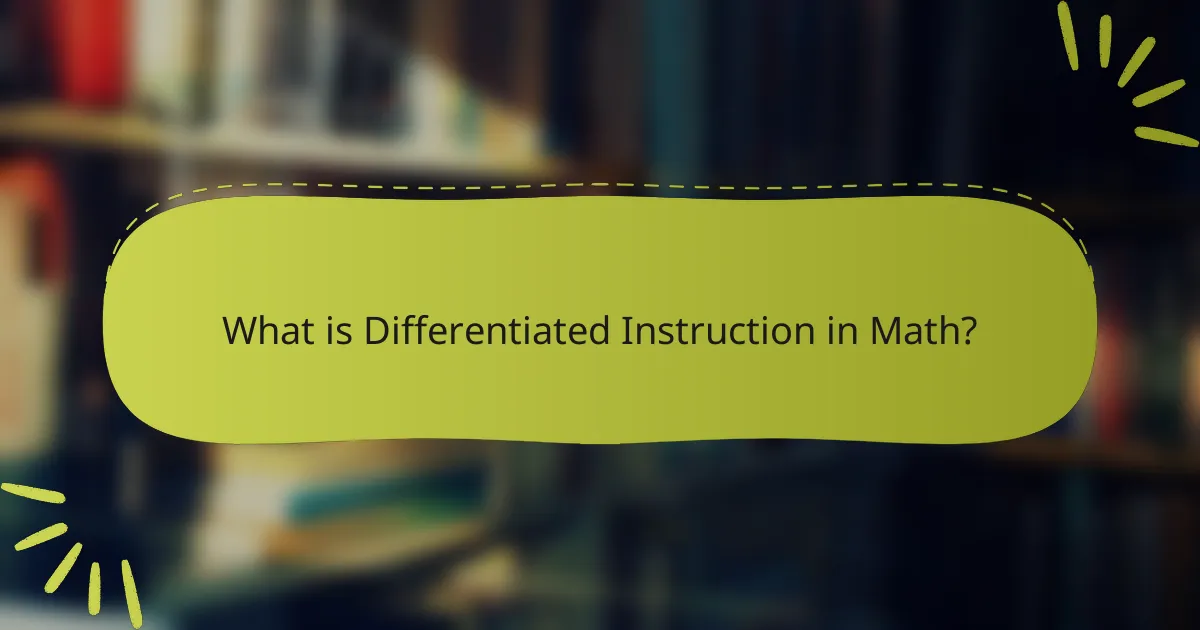
What is Differentiated Instruction in Math?
Differentiated instruction in math is an educational approach that tailors teaching methods to meet the diverse needs of students. This strategy recognizes that students have varying backgrounds, readiness levels, and learning preferences. Teachers implement differentiated instruction by adjusting content, process, and products based on individual student needs. For example, a teacher may provide advanced problem sets for gifted students while offering foundational exercises for those struggling. Research shows that differentiated instruction can lead to improved student engagement and achievement. According to a study by Tomlinson (2001), students in differentiated classrooms often perform better academically than those in traditional settings.
How does Differentiated Instruction in Math support diverse learners?
Differentiated Instruction in Math supports diverse learners by tailoring teaching methods to meet individual needs. This approach acknowledges varied learning styles, abilities, and interests among students. For example, some students may benefit from visual aids, while others might excel with hands-on activities. Differentiation allows for varied levels of difficulty in tasks, ensuring all students are challenged appropriately. Research indicates that students engaged in differentiated instruction show improved understanding and retention of mathematical concepts. A study by Tomlinson (2001) highlights that differentiated instruction leads to increased student motivation and achievement. This method fosters an inclusive classroom environment where all learners can thrive.
What are the key principles of Differentiated Instruction in Math?
The key principles of Differentiated Instruction in Math include recognizing students’ varying background knowledge, readiness, and interests. Teachers should provide multiple avenues for students to engage with math concepts. This involves offering varied tasks that cater to different skill levels. It also includes using flexible grouping strategies to facilitate peer learning. Ongoing assessment is essential to tailor instruction effectively. Finally, creating a supportive environment encourages risk-taking and fosters a growth mindset among students. These principles enhance student engagement and improve learning outcomes.
How does understanding student readiness influence Differentiated Instruction?
Understanding student readiness significantly influences Differentiated Instruction by allowing educators to tailor their teaching methods to individual learning needs. When teachers assess student readiness, they can identify the current skill levels and knowledge of each learner. This assessment informs the selection of appropriate instructional strategies and materials. For example, research shows that differentiated instruction can lead to improved student engagement and academic performance. A study by Tomlinson (2001) highlights that when instruction is aligned with student readiness, students are more likely to grasp concepts effectively. Thus, understanding readiness ensures that differentiation is purposeful and responsive, ultimately enhancing learning outcomes.
Why is Differentiated Instruction important in Math education?
Differentiated Instruction is important in Math education because it addresses the diverse learning needs of students. Each student has unique strengths, weaknesses, and learning styles. This approach allows teachers to tailor their instruction to meet these varied needs. For instance, some students may excel with visual aids, while others benefit from hands-on activities. Research shows that differentiated instruction can lead to improved student engagement and achievement. A study by Tomlinson (2001) found that students in differentiated classrooms showed greater academic gains. Consequently, implementing this method fosters a more inclusive and effective learning environment in Math education.
What impact does Differentiated Instruction have on student engagement?
Differentiated Instruction significantly enhances student engagement. It tailors teaching methods to meet diverse learning needs. This approach allows students to connect with the material in meaningful ways. Research shows that when instruction is adapted, students are more motivated to participate. For example, a study by Tomlinson (2014) found that differentiated strategies increased student interest and participation rates. Engaged students demonstrate higher levels of understanding and retention. Thus, Differentiated Instruction fosters a more interactive and dynamic learning environment.
How does Differentiated Instruction improve learning outcomes in Math?
Differentiated Instruction improves learning outcomes in Math by tailoring teaching methods to meet individual student needs. This approach acknowledges diverse learning styles and paces. It allows teachers to provide varied instructional strategies, such as visual aids, hands-on activities, and technology integration. Research shows that students engaged in differentiated instruction demonstrate higher achievement levels. A study by Tomlinson (2001) found that students in differentiated classrooms scored significantly higher on standardized math assessments. By addressing specific learning gaps, differentiated instruction fosters a deeper understanding of mathematical concepts. This personalized approach enhances student motivation and confidence, leading to improved performance in Math.
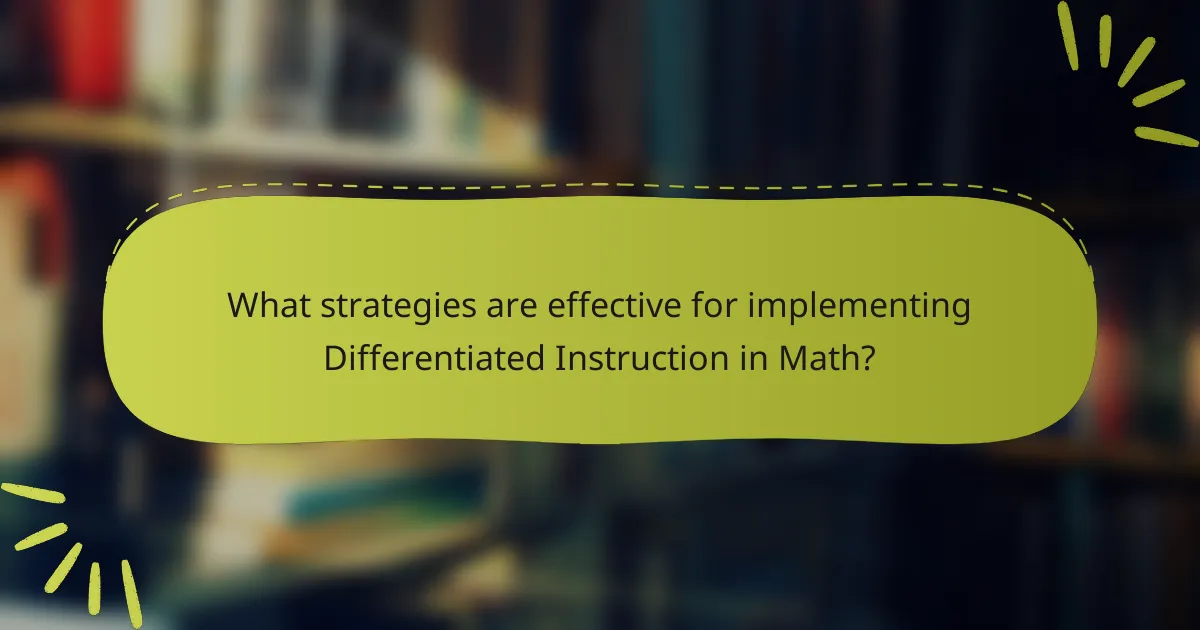
What strategies are effective for implementing Differentiated Instruction in Math?
Effective strategies for implementing Differentiated Instruction in Math include flexible grouping, tiered assignments, and ongoing assessment. Flexible grouping allows teachers to organize students by their skill levels and learning styles. This approach fosters collaboration and peer learning. Tiered assignments provide varying levels of difficulty for tasks, ensuring all students are challenged appropriately. Ongoing assessment helps educators identify student progress and adapt instruction accordingly. Research shows that these strategies enhance student engagement and improve learning outcomes in diverse classrooms.
How can teachers assess student needs for Differentiated Instruction?
Teachers can assess student needs for Differentiated Instruction through various methods. These methods include formative assessments, observations, and student feedback. Formative assessments, such as quizzes and exit tickets, provide immediate insights into student understanding. Observations during class activities reveal students’ engagement and learning styles. Additionally, student feedback allows learners to express their preferences and challenges. Collectively, these strategies help teachers tailor instruction to meet diverse learning needs effectively. Research shows that using multiple assessment methods enhances understanding of individual student requirements (Tomlinson, C. A., 2014, “The Differentiated Classroom: Responding to the Needs of All Learners”).
What tools can be used for formative assessment in Math?
Formative assessment tools in Math include quizzes, exit tickets, and digital platforms like Kahoot and Google Forms. Quizzes can assess student understanding in real-time. Exit tickets provide immediate feedback on specific concepts. Digital platforms offer interactive and engaging ways to collect data. These tools enable teachers to adjust instruction based on student performance. Research shows that formative assessments improve learning outcomes. For example, a study by Black and Wiliam (1998) found that effective formative assessment can significantly enhance student achievement.
How can teachers use data to inform their instructional strategies?
Teachers can use data to inform their instructional strategies by analyzing student performance metrics. This analysis helps identify individual learning needs and strengths. Teachers can assess test scores, homework completion rates, and classroom participation. They can then tailor lessons to address specific gaps in knowledge. For example, data may reveal that students struggle with specific math concepts. Teachers can adjust their instructional methods accordingly, using targeted interventions. Research shows that data-driven instruction improves student outcomes. A study by the Institute of Education Sciences found that data use in classrooms leads to enhanced student achievement.
What are some specific instructional strategies for Differentiated Instruction in Math?
Specific instructional strategies for Differentiated Instruction in Math include flexible grouping, tiered assignments, and varied instructional methods. Flexible grouping allows students to work in different groups based on their skill levels and learning preferences. Tiered assignments provide tasks at varying levels of difficulty to match student readiness. Varied instructional methods, such as using manipulatives, visuals, and technology, cater to diverse learning styles. These strategies help address the individual needs of learners in a math classroom. Research indicates that differentiated instruction can improve student engagement and achievement in mathematics.
How can flexible grouping enhance learning in Math?
Flexible grouping enhances learning in Math by allowing students to collaborate with peers at varying skill levels. This approach fosters a supportive environment where students can share diverse perspectives. It encourages engagement as students work together on tasks tailored to their needs. Research shows that flexible grouping can lead to improved problem-solving skills and deeper understanding of concepts. For instance, a study by Tomlinson et al. (2003) highlights that students in flexible groups demonstrate higher achievement compared to those in static groups. Additionally, this method allows teachers to assess student progress more effectively and adjust instruction accordingly. Overall, flexible grouping promotes personalized learning experiences that cater to individual strengths and weaknesses.
What role does tiered assignments play in Differentiated Instruction?
Tiered assignments play a crucial role in Differentiated Instruction by providing varying levels of challenge to meet diverse student needs. They allow educators to tailor tasks based on students’ readiness, interests, and learning profiles. This approach ensures that all students engage with the material at an appropriate level. Research indicates that tiered assignments can enhance student motivation and achievement. For instance, a study by Tomlinson (2001) found that students who participated in tiered activities demonstrated improved performance and deeper understanding of concepts. Thus, tiered assignments are essential for effectively implementing Differentiated Instruction in diverse classrooms.
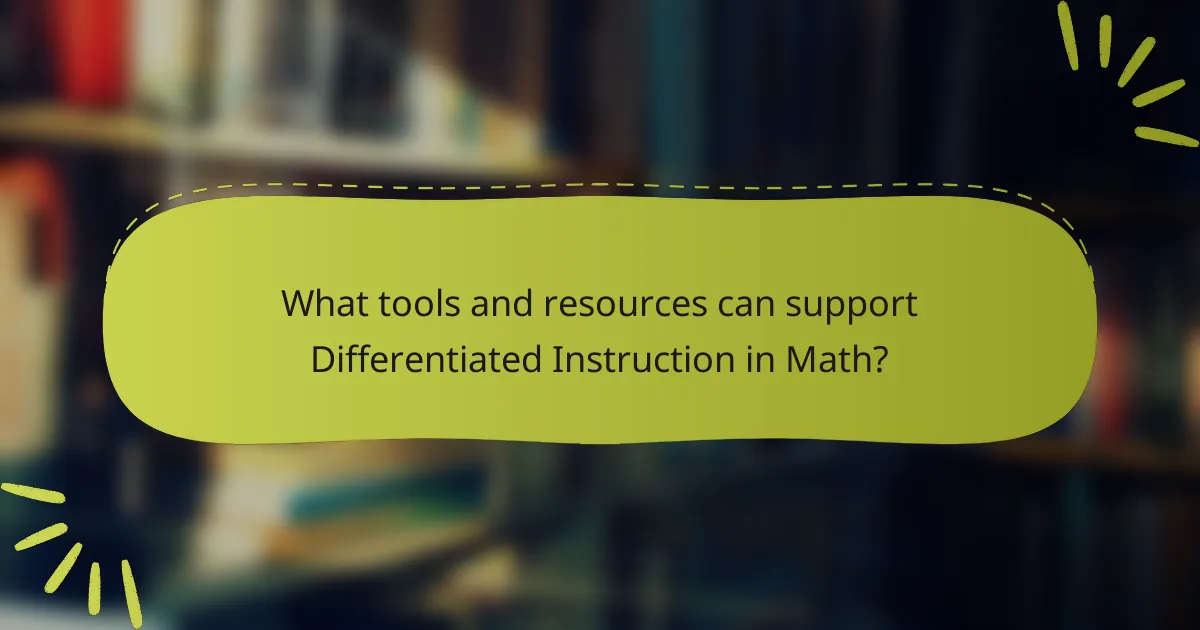
What tools and resources can support Differentiated Instruction in Math?
Tools and resources that support Differentiated Instruction in Math include adaptive learning software, manipulatives, and varied assessment methods. Adaptive learning software, such as DreamBox and IXL, personalizes math instruction to meet individual student needs. Manipulatives like base-ten blocks and number lines help students visualize mathematical concepts. Varied assessment methods, including formative assessments and project-based learning, allow teachers to gauge understanding in diverse ways. Additionally, online resources such as Khan Academy provide tailored practice and instructional videos. These tools collectively enhance engagement and understanding for diverse learners in math.
What technology tools are available for Differentiated Instruction in Math?
Technology tools available for Differentiated Instruction in Math include adaptive learning software, online math platforms, and interactive whiteboards. Adaptive learning software, such as DreamBox and IXL, personalizes lessons based on individual student performance. Online math platforms like Khan Academy provide tailored resources and exercises for varying skill levels. Interactive whiteboards facilitate collaborative learning and allow for dynamic lesson presentations. These tools support diverse learning needs and enhance student engagement in mathematics.
How can digital platforms facilitate personalized learning in Math?
Digital platforms can facilitate personalized learning in Math by offering tailored content and adaptive assessments. These platforms use algorithms to analyze student performance data. They adjust the difficulty of problems based on individual progress. This ensures that each learner receives appropriate challenges. Additionally, digital platforms provide instant feedback. This allows students to understand their mistakes in real time. They also offer a variety of learning resources. These can include videos, interactive exercises, and games. Such diverse formats cater to different learning styles. Research shows that personalized learning can improve student engagement and outcomes. A study by the Bill & Melinda Gates Foundation found that personalized learning initiatives can lead to significant gains in Math achievement.
What are some effective Math software programs for diverse learners?
Effective math software programs for diverse learners include DreamBox Learning, IXL, and Khan Academy. DreamBox Learning offers personalized lessons that adapt to each student’s learning pace. IXL provides comprehensive practice in various math concepts with immediate feedback. Khan Academy features instructional videos and practice exercises tailored to individual needs. These programs support diverse learning styles and help reinforce math skills. Research shows that personalized learning tools can improve student engagement and achievement in mathematics.
What resources can teachers utilize to enhance Differentiated Instruction in Math?
Teachers can utilize various resources to enhance Differentiated Instruction in Math. These resources include differentiated lesson plans tailored to diverse learning needs. Online platforms such as Khan Academy offer personalized learning experiences. Manipulatives like blocks and counters help visual learners grasp mathematical concepts. Assessment tools, including formative assessments, allow teachers to gauge student understanding. Professional development workshops provide strategies for effective differentiation. Collaborative learning groups encourage peer support among students. Educational software can adapt to individual student progress. Lastly, math games engage students while catering to different skill levels.
What role do manipulatives play in supporting diverse learners in Math?
Manipulatives play a crucial role in supporting diverse learners in math by providing hands-on experiences. They help students visualize abstract concepts, making learning more accessible. For example, using blocks can illustrate addition and subtraction effectively. Research shows that manipulatives improve engagement and understanding among students with varied learning styles. A study by the National Council of Teachers of Mathematics (NCTM) highlights that manipulatives can enhance problem-solving skills. Furthermore, manipulatives cater to kinesthetic learners who benefit from tactile interaction. They also promote collaboration through group activities, fostering social learning. Overall, manipulatives are essential tools in differentiated instruction for diverse math learners.
How can teachers access professional development on Differentiated Instruction?
Teachers can access professional development on Differentiated Instruction through various platforms. Online courses and webinars are widely available from educational organizations. Many school districts offer in-house training sessions focused on this teaching strategy. Professional learning communities within schools can also provide support and resources. Additionally, conferences and workshops dedicated to differentiated instruction are valuable for networking and learning. Research indicates that effective professional development enhances teaching practices, improving student outcomes. For instance, the National Center for Learning Disabilities emphasizes ongoing training for teachers to implement differentiated strategies successfully.
What are best practices for implementing Differentiated Instruction in Math classrooms?
Best practices for implementing Differentiated Instruction in Math classrooms include assessing students’ individual learning needs. Teachers should use formative assessments to identify strengths and weaknesses. This information helps in grouping students effectively. Flexible grouping allows for collaboration among peers with varying skill levels.
Providing multiple means of engagement is essential. Teachers can offer choices in assignments to cater to different interests. Using varied instructional strategies, such as hands-on activities and technology, enhances learning. Additionally, scaffolding instruction supports students at different readiness levels.
Regular feedback is crucial for student growth. It helps learners understand their progress and areas needing improvement. Finally, fostering a growth mindset encourages resilience among students. Research shows that differentiated instruction leads to improved student outcomes in diverse classrooms.
How can teachers create a supportive environment for diverse learners?
Teachers can create a supportive environment for diverse learners by implementing inclusive teaching strategies. They should recognize and value the unique backgrounds of each student. Differentiated instruction is essential for meeting varied learning needs. This approach allows teachers to tailor lessons based on individual strengths and weaknesses. Collaborative learning opportunities encourage peer support and engagement. Establishing clear expectations helps students understand how to succeed. Providing resources in multiple formats caters to diverse learning styles. Regular feedback fosters a growth mindset and encourages improvement. Research shows that inclusive classrooms enhance academic performance and social skills among all students.
What strategies can be used to foster collaboration among students in Math?
Group work encourages students to collaborate in solving math problems. Assigning roles within groups enhances accountability and engagement. Using technology, like collaborative platforms, facilitates communication among students. Peer tutoring allows stronger students to support their peers. Incorporating games promotes teamwork while reinforcing math concepts. Establishing clear goals helps students focus on common objectives. Regular feedback sessions improve group dynamics and learning outcomes. Research shows that collaborative learning boosts student achievement in math (Johnson & Johnson, 2014).
Differentiated Instruction in Math is an educational approach that customizes teaching methods to accommodate the diverse needs of students, recognizing their varying backgrounds, readiness levels, and learning preferences. The article outlines key principles such as flexible grouping, tiered assignments, and ongoing assessment, emphasizing their role in enhancing student engagement and achievement. It also discusses effective strategies, tools, and resources that support differentiated instruction, including adaptive learning software, manipulatives, and formative assessment methods. Research indicates that implementing these practices leads to improved understanding and retention of mathematical concepts among diverse learners.
